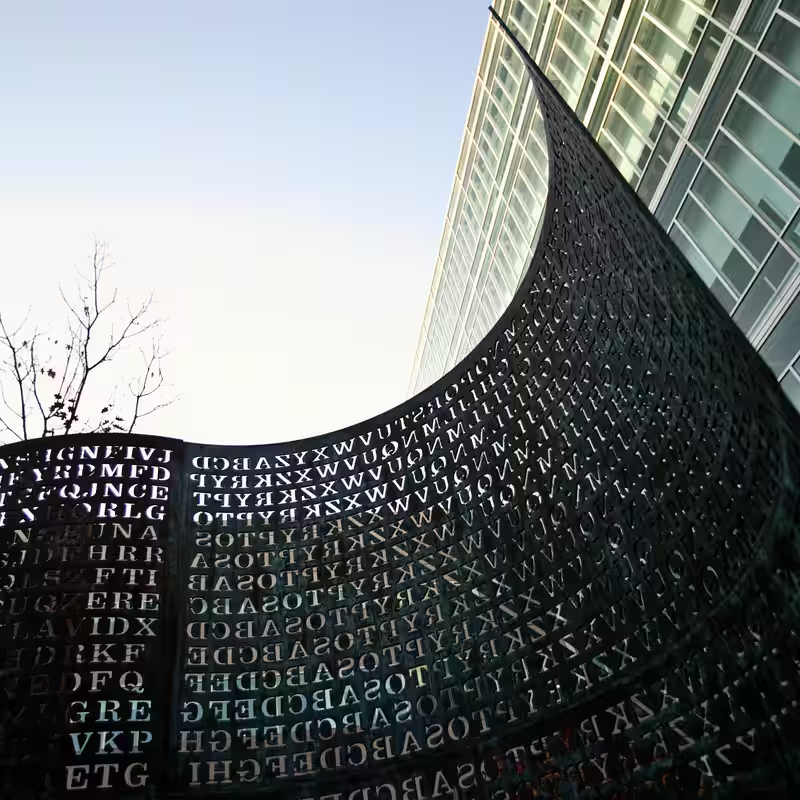How the CIA’s 35-Year-Old Kryptos Puzzle Was Solved in a Smithsonian Archive
For over three decades, the final unsolved passage of Kryptos—the enigmatic sculpture outside CIA headquarters—defied cryptographers, intelligence officers, and amateur codebreakers alike. But in a twist worthy of a spy thriller, the solution wasn’t uncovered in a high-tech lab or a covert operation. It was found… in a box of old papers at the Smithsonian.
Jim Sanborn, the 79-year-old artist behind Kryptos, had planned to auction off the secret solution this November to help cover medical expenses and fund disability programs. But before the gavel could fall, two longtime fans—journalist and novelist Jarett Kobek and playwright Richard Byrne—stumbled upon the answer in plain sight.
From Auction Catalog to Archival Goldmine
The breakthrough began with a footnote in an auction listing. RR Auction, which was handling the sale, mentioned that Sanborn’s original “coding charts” were housed at the Smithsonian’s Archives of American Art.
“That was the breadcrumb,” Kobek later recalled. Living in California, he asked his friend Byrne—who’s based near Washington, D.C.—to visit the archive. On September 2, 2025, Byrne spent hours photographing documents from Sanborn’s donated collection.
That night, as Kobek scrolled through the images, he spotted something astonishing: yellowed scraps of paper taped together, bearing phrases like “BERLIN CLOCK,” “EAST NORTHEAST,” and—most critically—a 97-character string that matched the length of Kryptos’s final unsolved section, known as K4.
“Hey—that says ‘BERLIN CLOCK’!” Kobek exclaimed. “This is it.”
Kryptos: A Puzzle That Defied Generations
Installed at CIA headquarters in Langley, Virginia, in 1990, Kryptos features four encrypted messages cut into a curving copper panel. The first three sections—K1, K2, and K3—were cracked by the late 1990s and early 2000s, revealing poetic and mysterious texts. But K4 remained untouched, even as Sanborn dropped cryptic hints over the years, including the words “BERLIN” and “CLOCK.”
Thousands tried to solve it. NSA analysts, hobbyist cryptographers, and even AI-powered algorithms failed. Yet the solution wasn’t hidden in code—it was buried in archival paperwork Sanborn had mistakenly donated during a health crisis a decade ago.
The Ethical Dilemma: Keep the Secret or Go Public?
On September 3, Kobek and Byrne emailed Sanborn with the full plaintext. He confirmed they had it right. But what followed was anything but celebratory.
Sanborn, fearing the auction would collapse if the secret got out, proposed they sign NDAs and share in the proceeds. The duo refused.
“It’s a complete red line,” Byrne said. “Nonstarter. Not happening.”
They worried that staying silent could make them complicit in what might be seen as a fraudulent sale. Meanwhile, Sanborn—still reeling—asked the Smithsonian to seal the archive until 2075.
Legal Threats and the Value of a Secret
RR Auction has since updated its listing to disclose the discovery. But it also sent Kobek and Byrne a legal warning: publish the solution, and face claims of copyright infringement and contract interference.
Yet the art world isn’t so sure the reveal kills the value. Legal expert Thomas C. Danziger pointed to the infamous Banksy shredder incident: “Sometimes, the destruction of a secret only increases its mystique.”
Elonka Dunin, a leading Kryptos enthusiast and game designer, argues the real prize isn’t the answer—but the method. “If they don’t have the method,” she said, “it’s not solved.”
What Happens Next?
The auction begins October 17 and ends November 20, 2025. Whether the solution stays private or leaks into the wild remains uncertain. But one thing is clear: the legend of Kryptos just entered its most dramatic chapter yet.
Sources
The New York Times: “A C.I.A. Secret Kept for 35 Years Is Found in the Smithsonian’s Vault”
RR Auction – Kryptos Collection Listing




